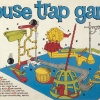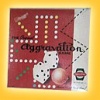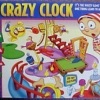Much like dominoes or marbles, tiddlywinks has always been a game with rather divided fans. There are those who sit in pubs most afternoons and enjoy a game over a pint of ale; and there those under 10 years old who have recently discovered just how much fun you can have with the simple things in life.
Because, my word, tiddlywinks is simple. No batteries required or lengthy instruction booklets here. Instead, the game consisted of a six-foot by three-foot felt mat, with a small pot positioned in the centre of it.
The game is played by two teams - usually defined by the colour of tiddlywinks they choose to play with - from green, red, blue and yellow. There are four small tiddlywinks and two larger ones to play with. And for anyone still wondering what tiddlywinks actually are - they are best described as nothing more than small circles of thin plastic. The extra tool needed for the game are known as squidgers - slightly larger, different-shaped pieces that players use to flip their tiddlywinks at the target - the pot. This is achieved simply by pressing down hardly on one edge of your wink to hop it into the air. After a while, many players become adept at knowing which angle and how hard you need to use your squidger to get the desired result. Sometimes you may want to squopper your opponent's wink, which means covering it with one of your winks and so preventing them from making a further play with it. Only the wink placed on top can be played in such situations, and advanced players have been known to be dealing with huge piles of winks which they must manouevre round.
The aim is to get your tiddlywinks into the pot - for which you receive three points per tiddlywink. But near misses are also rewarded - with one point. Only the nearest ones win, and so if the next player leaps their tiddlywink over yours for prime position, yours no longer counts.
There are a number of terms to know when playing Tiddlywinks, each used t describe a move or strategy. For example: a blitz is a player's attempt to put all six of their winks into the pot early on in the game; a bomb is when a player tries to disturb a pile of winks by flipping his or hers straight at it; and a Penhaligon describes when a player pots a wink from the baseline, which is usually 3ft away from the pot.
The game, when placed in the right hands, is one of wit and strategy. It can also be pretty cutthroat. No doubt largely dues to the level of inactivity involved in a game of tiddlywinks, it grew out of the pub culture across England during the 1800s. The game underwent a massive resurgence in the 60s and 70s, after Oxford University students fell under its spell and the game was consequently taken up by other univerisities. Soon, a British Universities Championship was being run around Tiddlywinks - and Prince Philips' own love of the sport/game.
Tiddlywinks has moved with the times and is now available in various guises, such as frog-shaped tiddlywinks and ones themed around football, and many more - just to keep the kids interested. It is still being played competitively in the US and UK, with official organisations safeguarding the rules of the game. There is nothing 'tiddly; about the number of fans around today, that's for sure!










Do You Remember Tiddlywinks?
Do You Remember Tiddlywinks?